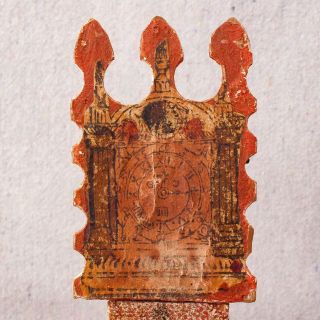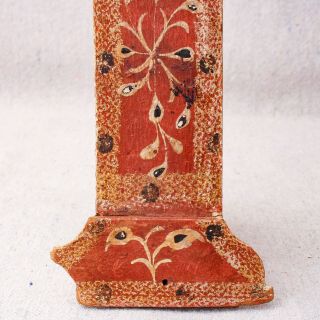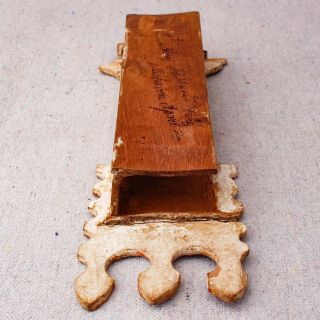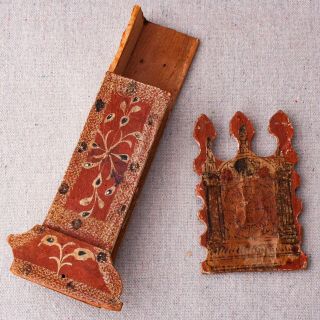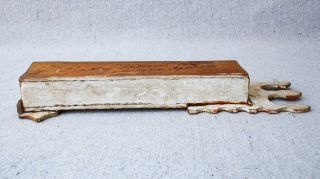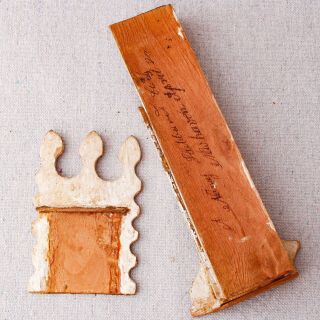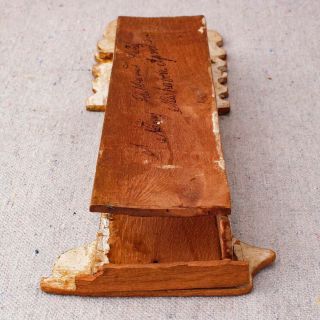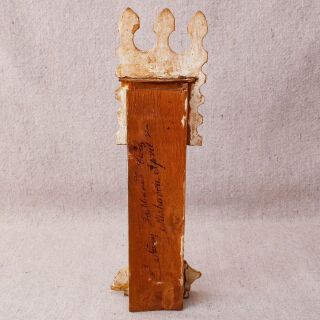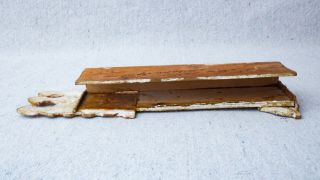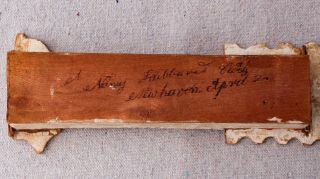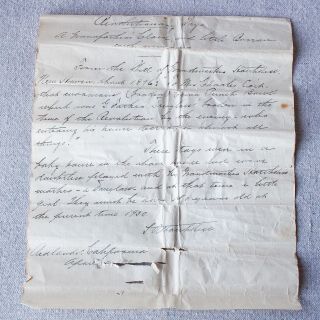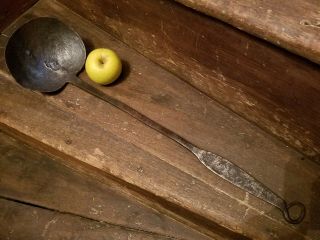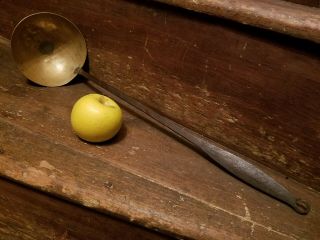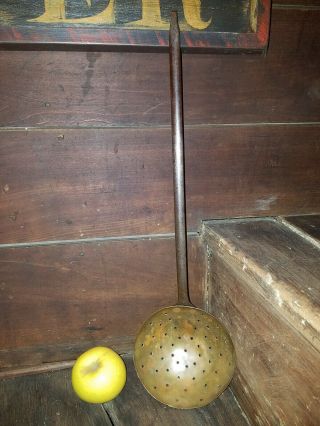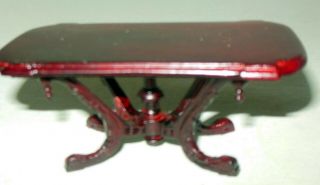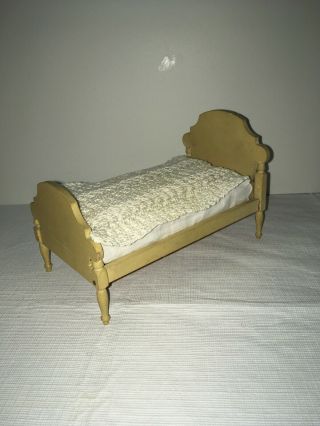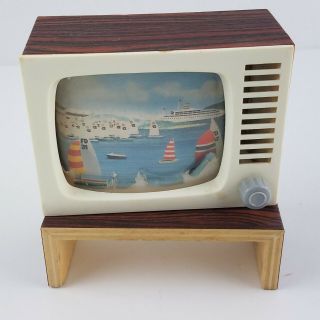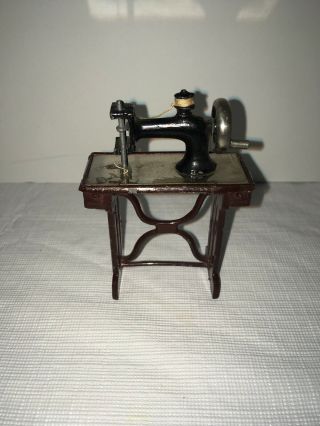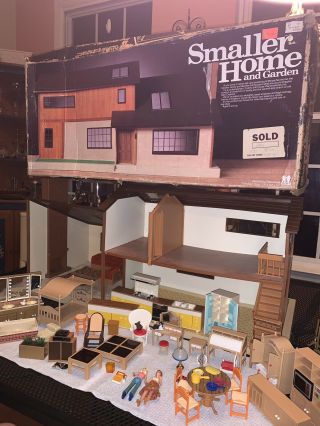18th 19th C Revolutionary War England Primitive Folk Art Dollhouse Clock 9 "
Item History & Price
...lor: rgb(34, 34, 34); font-family: Arial, Helvetica, sans-serif; font-size: small; background-color: rgb(255, 255, 255);">
Reverse side of clock is signed "Nansy Hubbard - New Haven - April 2."
Letter reads as follows:
Revolutionary Toys -- A grandfather's clock and little divan with _____. -- From the Will of Grandmother Hotchkiss, New Haven, about 1876: "To Mrs. Charles Cait: that creamware (broken) china punch bowl which was Grand Father Douglass', broken in the time of the Revolution by the enemy who entering the house, destroyed almost all things." These toys were in a baby house in the above house and were doubtless played with by Grandmother Hotchkiss' mother - a Douglass - and at that time a little girl. They must be over 150 years old at the present time 1930. S.R. Hotchkiss, Redlands, California, April 1930.
After some recent research, we were able to find historical records associating a Nancy Hubbard to her sister Elizabeth Ann Hubbard Hotchkiss (Grand Mother Hotchkiss in the letter), and their mother Elizabeth Douglas Hubbard (Grand Mother Hotchkiss' Mother in the letter). The will mentioned in the letter would have belonged to Elizabeth Ann Hubbard Hotchkiss. Her grand father, also mentioned, was Benjamin Douglas.
Family history as noted:
Benjamin Douglas (B. 08-29-1739 D. 12.3.1775) married Elizabeth Douglas (B. 01-3-1744 D. 03-01-1823), they are the parents of Elizabeth Douglas Hubbard (B. 05-18-1770 D. 09-03-1834) who married William Gold Hubbard (B. 06-16-1767 D. 02-18-1846). Of the several children of Elizabeth and William, one was Nancy Hubbard (B. 1793 D. unknown) and also Elizabeth Ann Hubbard Hotchkiss (B. 03-07-1798 D. 07-08-1881) who married Russell Hotchkiss (B. 09-15-1781 D. 01-01-1843). S.R. Hotchkiss is believed to be descended from Elizabeth and Russell.
Dimensions: Height 9" x Top Width 2 1/2" x Body Width 1 5/8" x Base Width 3" x Depth 1".
Weight: 1.4 oz.
Condition: Clock is missing the entire panel along the left side. A portion of the base is missing. The top side, behind the clock may have once had a panel as well. A break or chip to the small panel adorning the front of base. Paint and glue have discolored with age with some soiling from years of being handled. The top face of clock is intact but has come apart from the body. This can be glued back in place easily. The sides and base are unadorned, and a restorer could easily reproduce these lost panels. The letter is not clear in stating if the clock was damaged during the American Revolution, but does state almost all things in the house were destroyed. Sadly the divan, which was mentioned in the letter and had survived up to a certain point, was not found with this clock and attached letter.




